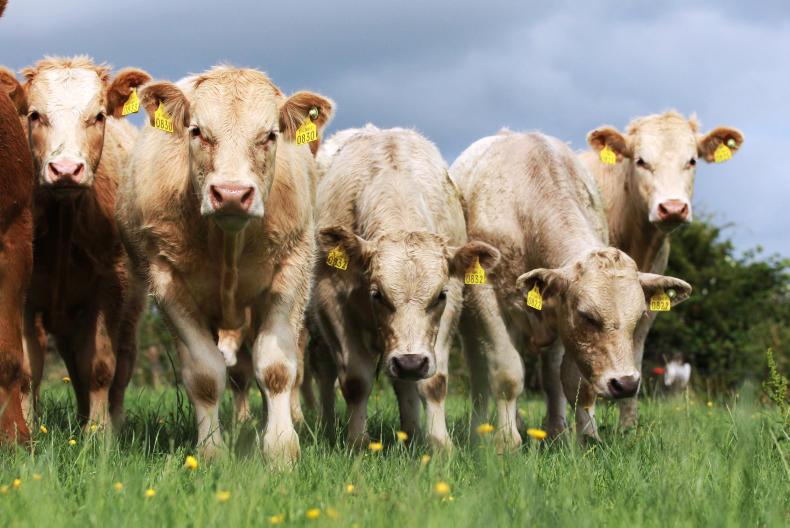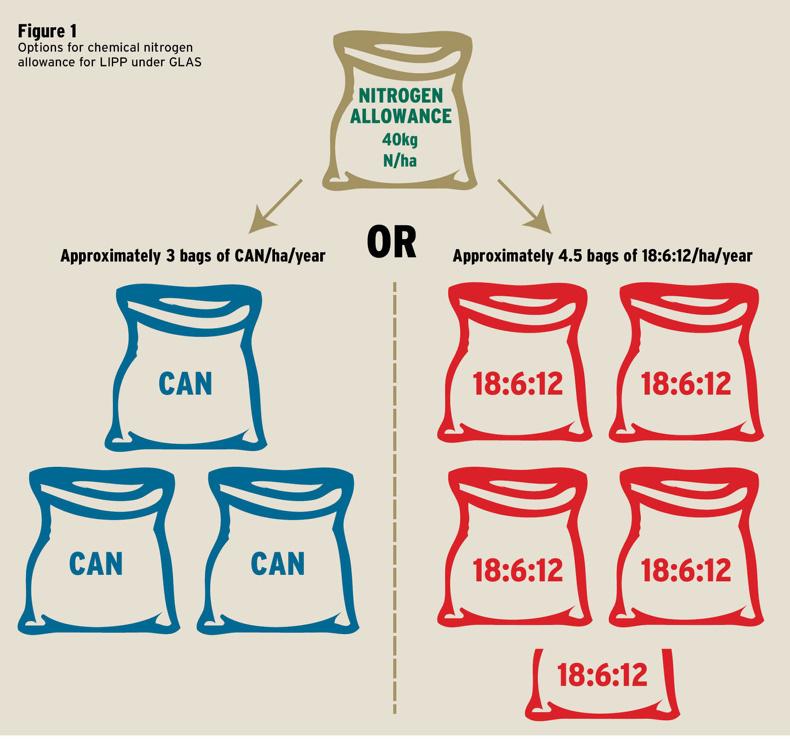With over 47,000 farmers involved in Green Low-Carbon Emission Scheme (GLAS) having chosen low input permanent pasture (LIPP) as one of their key options, it is an area that is relevant to the vast majority of farmers involved in the scheme. Approximately 280,000ha are designated as LIPP, so it is vital that farmers are up to date with the requirements of the scheme.
The option ensures that farmers receive a payment of €314/ha up to a maximum of 10ha for GLAS I farmers, while GLAS II and III farmers can receive payment up to a maximum of 5ha.

Low input
The overall aim is to provide grass for grazing to livestock through the use of very low inputs, hence why the payment rate is one of the highest in the scheme.
This high rate is expected to compensate for the lower productivity of the LIPP compared with more intensively managed pasture.
LIPP was developed to promote a grassland management system that, through appropriate grazing levels and restriction on fertiliser and pesticide use, would lead to a more diverse sward.
When choosing the parcel, it was required to have been a forage parcel for the previous eight years, with the sward required to contain a minimum of four grass species, excluding ryegrasses. These can include, but are not limited to, cocksfoot, timothy, bent grasses, fescues, sweet vernal and Yorkshire fog.
It must also contain a minimum of three other non-grass species, such as plantain, chickweed, trefoils, etc. These must be dispersed throughout the field.
The use of both fertilisers and pesticides is permitted as long as they are used in minimal amounts.
For fertiliser, farmers are permitted to spread 40kg of chemical nitrogen per hectare over the course of the year.
Looking at commonly-used options, this equates to approximately 3 bags of CAN/ha (1.2/acre) per annum or approximately 4.5 bags of 18:6:12/ha (1.8/acre) over the year. Other types of fertiliser can also be used.
Using compound fertilisers may be the better option to increase the fertility of the soil as long as it is permitted in your nutrient management plan, which can in turn help to improve the response from nitrogen when applied.
Farmers are also urged to target slurry applications on fields that are low for both phosphorus and potassium. This can be seen by examining your nutrient management plan that was developed as part of GLAS.
Fields designated as LIPP cannot be cut for silage or hay production. Pesticides are only permitted to be used for spot treatment of noxious and invasive weeds and rushes. Where present, rushes must be controlled mechanically, by weed wiping or spot spraying. They can also be controlled by topping however this can not be completed between 15 March and 1 July annually.
Avoiding penalties
While current ground conditions mean that topping is not an issue, it is still important to note that parcels cannot be topped between 15 March and 1 July annually.
Reseeding of LIPP in any way is strictly prohibited. It would alter the naturally occurring composition of the grassland.
If a participant does decide to reseed a LIPP parcel, then the parcel must be withdrawn from the action and all payments already issued on the parcel will be recouped.
Farmers must be conscious to remain within the terms and conditions of the scheme, as the penalties can be substantial.
Where a farmer has a large portion of LIPP involved in one parcel, they must be wary to avoid any penalty as it could see a large loss of income from the scheme.
A recent change to the terms of the scheme that applicants must be aware of is that supplementary feeding of forage to cattle is strictly not allowed.
Supplementary meal feeding, if required, may take place provided troughs/creep feeders are moved to avoid poaching.
Supplementary meal feeding of sheep is allowed as long as meal troughs are moved regularly to avoid poaching. Feeding of hay to sheep is also permitted provided hay racks are moved to avoid poaching.
Where a farmer has 5ha in one field under LIPP, if they are found to be supplementary feeding on this parcel it would mean that a farmer is penalised on the entire parcel and could potentially miss out on full payment for that parcel, which would be €1,570 for a 5ha parcel.
While some farmers who may have initially been lowly stocked chose LIPP as one of their key actions, it is important that these farmers keep an eye on their stocking rate.
If LIPP is selected and a farmer subsequently breaches 170kg organic N/ha, there will be a clawback of any payments made to that point. Therefore, any farmer who seeks a nitrates derogation will be ineligible.
Inspection issues
According to the Department, the main issues that inspectors are seeing out on the ground is where a single field has been split between LIPP and another action, such as traditional hay meadow (THM), the area was not fenced off.
Another issue that was seen was the presence of heather on some parcels in combination with other ineligible features such as scrub.
Inspections for GLAS are centred around deadline dates in the scheme, so even though the temptation may exist to top a field in late June, before it is permitted, the applicant is placing themselves at a greater risk of a penalty.






 This is a subscriber-only article
This is a subscriber-only article











SHARING OPTIONS: